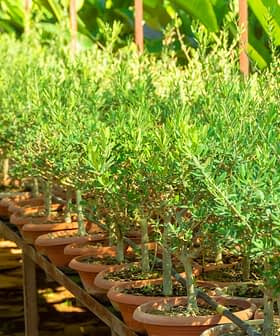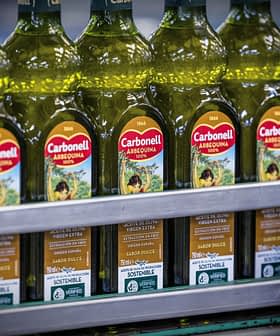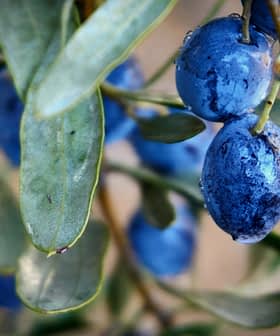
Elena Víboras (left), Minister of Agriculture, Fisheries and Rural Development, announced the Andalusian estimates in Jaén today.
Spain could return to record levels and pump out about 1.6 million tons of olive oil this season, based on a a new forecast that Andalusia alone will make more than 1.3 million tons.
According to figures from the Andalusian regional government, its own output will come from an expected — and imminent — harvest of 6.2 million tons of olives, meaning a yield of about 21 percent.
Given these figures and others from Spain’s Olive Oil Agency, it said the outlook for the national harvest was a drop of just 0.3 percent in the 2011/12 all-time record of just over 1.6 million tons of olive oil.
But the big difference, according to the farmer union UPA, is that after a dismal harvest last season, this time Spain starts off with olive oil stocks of just 302,663 tons, less than half its 2011/12 carryover of 692,500 tons.
“That means the same harvest, but less olive oil on the market,” said UPA spokesman Agustín Rodríguez, who also stressed that if it did not rain soon, production could be up to ten percent lower than forecast.
Favorable weather aided recovery
Announcing the Andalusian estimates in Jaén today, Elena Víboras, Minister of Agriculture, Fisheries and Rural Development in the Andalusian regional government, said they were based on sources including nearly a third of the region’s 820 olive oil mills.
The region’s anticipated production of 1.3 million tons of olive oil would be about a third above the average for the last five seasons. The province of Jaén is expected to deliver 715,000 tons of this total, followed by Córdoba with nearly 274,000 and Granada with about 132,000 tons.
Spain’s total production fell to just 600,000 tons last season — due to adverse weather — which depleted stocks but also promoted better flowering, fruit set and fruit development this season.
According to the Andalusian forecast, other factors were favorable weather conditions, namely heavy rainfall, good temperatures during flowering, a good level of water stress, and no severe winter frosts.
These circumstances induced the phenomenon known in Spanish as vecería — the alternation between high and low yield harvests.
Table olives
The olive oil harvest in Andalusia is expected to total about 411,000 tons — up seven percent on the average for the last four seasons- and that for Spain nearly 497,000 tons.
Earlier this month, the International Olive Council provisionally forecast a worldwide total of 2.5 million tons of table olives and 3 million tons of olive oil for 2013/14.
Seeking better grower prices
Viboras said the Andalusian government would keep working to improve incomes in the sector and profit margins for both growers and upstream businesses (such as mills and cooperatives), “although this would not be an easy task.”
Rodríguez said reducing the high level of fragmentation on the production side would be the fastest way to “counteract the abusive policies of the big retailers, who will be the ones deciding prices in the immediate future, not obeying the supply of olive oil in the market — which will be less than two seasons ago — and their continued use of olive oil as a loss leader product.”
The Andalusian olive oil sector
Andalusia dedicates just under a third of its arable land to olive cultivation — a total of 1.5 million hectares.The majority of its about 170,000 olive plantations are less than 10 hectares.
Together they generate annual production to the value of more than €2.2 billion ($3b), nearly half of which comes from Jaén.
The official olive oil season runs from October to September.








